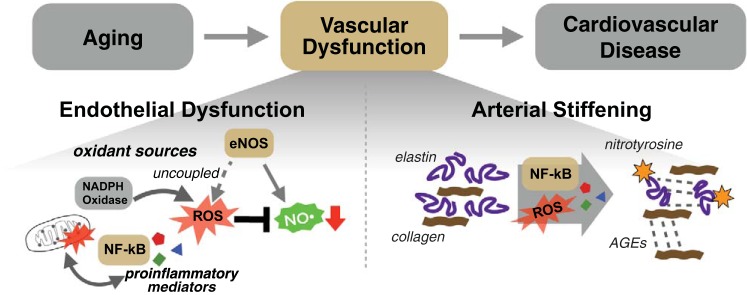Fig. 1.
Primary mechanisms of age-related vascular dysfunction. Vascular dysfunction is a key intermediary event linking aging to increased cardiovascular disease risk. Endothelial dysfunction (bottom left) is characterized by reduced bioavailability of nitric oxide (NO) as a result of excess reactive oxygen (ROS) production by dysfunctional mitochondria, increased NADPH oxidase activity, and uncoupling of endothelial NO synthase (eNOS). Increased proinflammatory cytokine production and an upregulation of the proinflammatory mediator NF-κB also contribute. Arterial stiffening (bottom right) occurs with age as a consequence of increased collagen deposition, loss/fragmentation of elastin, and formation of advanced glycation end products (AGEs). These processes are driven, at least in part, by age-associated increases in oxidative stress and inflammation.

